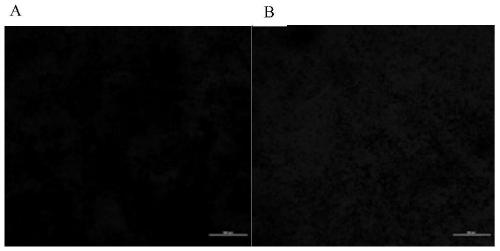A strain of Corynebacterium glutamicum overexpressing adenosine triphosphate and its construction method and application
A technology of adenosine triphosphate and Corynebacterium glutamicum, which is applied in the biological field, can solve the problems of weak film-forming ability and continuous fermentation, and achieve the effects of increased proline production, enhanced initial adhesion ability, and shortened fermentation cycle
- Summary
- Abstract
- Description
- Claims
- Application Information
AI Technical Summary
Problems solved by technology
Method used
Image
Examples
Embodiment 1
[0029] Example 1: Construction of recombinant plasmids.
[0030] ATPase upper primer ATPase-F and lower primer ATPase-R were used to carry out conventional PCR with the genome of the original strain Corynebacterium glutamicum ATCC13032 as a template to obtain ATPase gene fragments, which were then purified.
[0031] ATPase-F: gcctgcaggtcgactctagaggatccatgactgacattgatctggtggtggaa (on the first 20 bp plasmid, the bold font is the BamHI restriction site);
[0032] ATPase-R: aattcgagctcggtacccggggatccctagggcataaaccatgcctcttcg (on the last 20 bp of the plasmid, the boldface is the BamHI restriction site).
[0033] One-step cloning of this fragment and the pXMJ19 plasmid digested by BamHI to obtain the recombinant plasmid pXMJ19 / *ATPase for overexpressing the ATPase gene. See the agarose gel electrophoresis diagram Image 6 .
Embodiment 2
[0035] The resulting pXMJ19 / *ATPase recombinant plasmid was introduced into the competent Corynebacterium glutamicum ATCC13032, screened on the LB plate containing 6.5ug / ml chloramphenicol, cultured for 2 to 3 days, and then picked out the transformant in the LB plate containing 6.5 ug / ml chloramphenicol in LB liquid medium, cultured at 30°C and 200rpm / min for 1-2 days, and then verified by colony PCR to obtain recombinant bacteria overexpressing adenosine triphosphatase ATPase. Validation primer 1: aattaagcttgcatgcctgcaggt, validation primer 2: atcggcgctacggcgtttca. After the successful construction of the transformed strain, 96-well plate and 6-well plate experiments, as well as FESEM and CLSM electron microscope experiments were carried out. Electron microscope photos can visually and concretely see the amount and shape of the biofilm. After the film-forming effect is improved, continuous fermentation is carried out.
[0036] figure 1 Among them, A and B are the original...
Embodiment 3
[0039] Embodiment 3: Fermentation experiment of recombinant bacteria proline.
[0040] The components per liter of the activation medium are as follows: glucose 10-20g, peptone 8-15g, yeast powder 5-12g, sodium chloride 8-15g.
[0041] The components per liter of the seed medium are as follows: 25-35g of glucose, 15-25g of corn steep liquor, 5-10g of ammonium sulfate, 0.1-1g of magnesium sulfate heptahydrate, 0.5-2g of potassium dihydrogen phosphate, and 1-5g of urea.
[0042] The composition per liter of the fermentation medium is as follows: 80-120g of glucose, 20-25g of corn steep liquor, 20-30g of ammonium sulfate, 0.1-1g of magnesium sulfate heptahydrate, 0.5-2g of potassium dihydrogen phosphate, and 1-5g of urea.
[0043]Add 5ml of activation medium to each 50ml centrifuge tube, connect the bacteria Corynebacterium glutamicum ATCC13032 and the recombinant bacteria respectively, and activate them at 28-34°C and 200-250rpm for 18h.
[0044] After the activation is complet...
PUM
 Login to View More
Login to View More Abstract
Description
Claims
Application Information
 Login to View More
Login to View More - R&D
- Intellectual Property
- Life Sciences
- Materials
- Tech Scout
- Unparalleled Data Quality
- Higher Quality Content
- 60% Fewer Hallucinations
Browse by: Latest US Patents, China's latest patents, Technical Efficacy Thesaurus, Application Domain, Technology Topic, Popular Technical Reports.
© 2025 PatSnap. All rights reserved.Legal|Privacy policy|Modern Slavery Act Transparency Statement|Sitemap|About US| Contact US: help@patsnap.com



